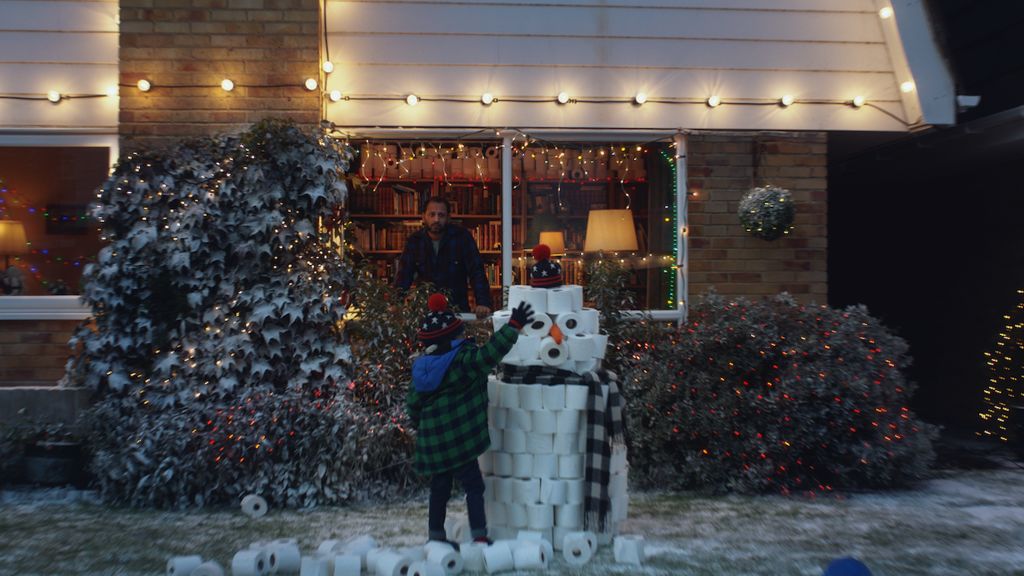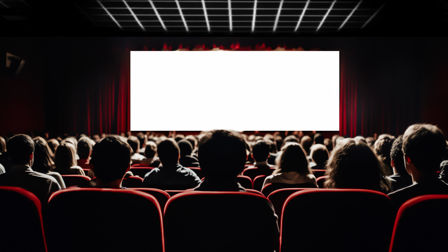How crises impact the visuals used to drive consumer purchasing
Dr Rebecca Swift, Global Head of Creative Insights at Getty Images and iStock, examines how the events of 2020 impacted the images brands use in their advertising, and then delves further back in time to see how the changing world was reflected in advertising's output.
During the past year we have all dealt with changes to our work life, home life, relationships and how we spend our leisure time.
As a result, brands also have had to change their messaging. This is most evident in changes to the visuals that brands use to drive people to make purchasing decisions. Commercial imagery has often had to adapt in response to major events. Despite the unprecedented nature of what we’ve faced this year, by leaning on 25 years of research, it is possible to draw on previous global crises to show how visual language has evolved and what trends from this coronavirus period we can expect to see stick around.

Above: The geek shall inherit the earth. Images from the 90s were playful and focused on aspirational people, unless they were playing a specific role, such as the 'geek' [Credit: Alan Powdrill, Getty Images].
Looking back to look forward
When Getty Images was established back in 1995, at the start of the dot.com boom, the economy was growing and new technology businesses were attracting investment at incredible rates. With no legacy visual language, these businesses took more risks with imagery, creating campaigns that were more playful and creative: brands including Virgin, Sony PlayStation, and the iconic Apple Think Different campaigns pulled along the visual language in their loud and colourful wake. Imagery focused on aspirational people (unless they were playing a specific role, such as the 'geek').
Consumers looked to be reassured and comforted, so advertising imagery reacted by focusing on family. It was the beginning of the people-focused imagery we see today.
At the turn of the century, Millennium Bug fears and the eventual dot.com crash meant that advertising imagery receded. Playful imagery gave way to friendly businessmen in finance and technology, and millennial, blue-toned photography that exuded calm and confidence. It was a time of reflection, away from the crazy and colourful years that came before. Imagery reflected the shift towards self, inner tranquillity and wellbeing.
Then, the events of 9/11 shifted the visual language once again. The effects of the terrorist attacks rippled across the economy as consumer attitudes shifted almost overnight. Consumers looked to be reassured and comforted, so advertising imagery reacted by focusing on family. It was the beginning of the people-focused imagery we see today. Community and connection were used as a visual device to convey togetherness in an unsettling time.

Above: Family and wellbeing took centre stage in the wake of the events of September 11 2001 [Credit: Pascal Broze, Getty Images].
During the mid-2000s, interest in environmental issues grew, fuelled by Al Gore’s An Inconvenient Truth documentary. The polar bear emerged as the icon for climate change, while nature became more prevalent within brand imagery.
The financial crisis of 2008 and the global recession in 2009 are the most recent examples of global crises that, in turn, impacted the way brands communicate. It led to more personalised messaging, focusing on small businesses and small business owners — the “business owner with arms crossed standing in front of their business” soon became a visual icon. The overall trend was towards friendliness, confidence and stability. Unfortunately, concern for the environment waned as a result — at Getty Images, we did not see polar bear imagery trend again until 2019.

Above: Images of polar bears spent 10 years in the wilderness, only coming back to prominence in 2019 [Credit: Chase Dekker Wild-Life Images, Getty Images].
Imagery in the time of Covid-19
So, how has imagery changed since the start of the pandemic in March? By undertaking consumer research for our insights platform, Visual GPS, analysing the imagery used in advertising and the hundreds of thousands of different search terms typed into the Getty Images and iStock websites, we’ve been able to monitor shifts in the usage of images over this time.
While we usually see increases in interest in the environment as the economy grows, it has become inextricably linked to wellness during the Covid-19 crisis.
It will come as no surprise that searches for coronavirus/Covid-19 dominated. The percentage increase year-on-year for icons of the crisis are off the charts: washing hands, hand sanitiser, face masks, cough, flu, nurses, doctors and empty streets. Government regulations also impacted search trends: 'social distancing' was the fastest growing search term between March and May.
Meanwhile, there’s been a huge shift to visuals of 'working from home', up 1,310% January to November, year-on-year. Many thousands of customers searched for content related to video calls, video conferencing, virtual meetings, remote working and conference calls. Sustainability and sustainable living have also trended this year. While we usually see increases in interest in the environment as the economy grows, it has become inextricably linked to wellness during the Covid-19 crisis.
And, as we adapted to a new normal this year, brands tried to empathise with our new social behaviour: trending search topics have included home delivery/food delivery, online shopping, home schooling and watching TV.

Above: 'Working from home' has been one of Getty's most search terms across 2020.
Similar to after 9/11, advertising imagery has focused on being with family at home. Whether eating, working or simply hanging out together, 'family' is the second-highest searched term of the year, and is now higher, month-on-month, than coronavirus or Covid-19.
What we have learnt from past crises is that visual trends that emerge tend to be long-term, not just quick shifts in behaviours.
We’re also seeing this trend play out in this season’s Christmas adverts. Sainsbury’s, Asda and Tesco have all referenced Covid-19 in their campaigns, empathising with consumer concerns and featuring imagery of family and togetherness. With numerous studies this year finding consumers expect empathetic storytelling at this time, this change in focus is perhaps more likely to resonate with audiences.
What we have learnt from past crises is that visual trends that emerge tend to be long-term, not just quick shifts in behaviours that return to ‘normality’ shortly after. As a result, we will continue to see themes such as remote working, social distancing, family and wellbeing continue to thrive throughout 2021. Looking back over the past 25 years, it’s clear just how often brand imagery has had to evolve in response to global crises, showing just how nimble, tactful, and empathetic visual communication can be
Credits
powered by
- Agency BBH/London
- Production Company Somesuch
- Director Raine Allen-Miller
-
-
Unlock full credits and more with a Source + shots membership.
Credits
powered by
- Agency BBH/London
- Production Company Somesuch
- Director Raine Allen-Miller
- Editing Trim
- Post Production Untold Studios
- Sound Design 750mph
- Creative Danny Seager
- Creative Steve Hall
- Creative Director Tom Drew
- Head of Art Uche Ezugwu
- Producer Joseph Pawsey
- Assistant Producer Kurtison Bailey
- Executive Producer Seth Wilson
- Producer James Waters
- DP Lasse Frank
- Editor Matt Newman
- Sound Designer Sam Ashwell
- Sound Designer Ben Gulvin
- Music Supevisor Hywel Evans

Credits
powered by
- Agency BBH/London
- Production Company Somesuch
- Director Raine Allen-Miller
- Editing Trim
- Post Production Untold Studios
- Sound Design 750mph
- Creative Danny Seager
- Creative Steve Hall
- Creative Director Tom Drew
- Head of Art Uche Ezugwu
- Producer Joseph Pawsey
- Assistant Producer Kurtison Bailey
- Executive Producer Seth Wilson
- Producer James Waters
- DP Lasse Frank
- Editor Matt Newman
- Sound Designer Sam Ashwell
- Sound Designer Ben Gulvin
- Music Supevisor Hywel Evans
)




 + membership
+ membership







